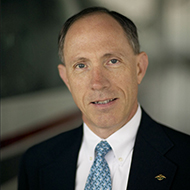Safety Pilot: Soft field, soft thinking
Who is responsible for a takeoff gone wrong?
Traveling to the Caribbean, where fuel or runway conditions are sometimes in question, it’s smart—make that essential—to check ahead. Even in the United States, going off the beaten path requires a bit more diligence. FAR 91.103—“Preflight action”—stipulates that each pilot in command shall, before beginning a flight, become familiar with all available information concerning that flight. If the rule seems overly broad, just remember who has the most to lose.
A few years ago, an experienced pilot opted to depart a small airport in the continental United States where he kept his 1950s-vintage Cessna 180 on amphibious floats. Upon reaching about 55 knots, the landing gear apparently caught a softer spot, and the Cessna flipped over on its back.
It had been raining for several days, and the airport/facility directory noted that the grass runway was not available for the winter season. The accident occurred a few days before the season opener. If you’re going into or out of a grass strip—even if it’s open—and there’s been much rain prior to your flight, a phone call or email to the airport manager/operator to check runway condition seems like more than just a good idea. The pilot involved in this accident was based at the airport, so the question of, “What did he know and when did he know it?” seems to have been answered.
That the ground was soggy was not in question. In fact, it was so soft that the pilot used his car to tow the aircraft to the end of the runway. The vehicle got stuck, which might have been a solid indication that the ground was a bit too soft for a safe takeoff. This counted, in the pilot’s view, as a runway inspection, even though the towing took place in a different part of the runway from what was later used. The pilot never got out of the vehicle to inspect the takeoff surface.
The pilot, who was also a CFI, had been flying several decades with several thousand hours. He’d flown tailwheel aircraft and seaplanes off grass strips and had made more than 100 takeoffs from this grass runway. A standard Cessna 180 might have made it off, but amphibs are not designed with soggy, soft runways in mind. Some pilots refer to amphibious aircraft as “grocery carts.” They sit high off the runway, and are heavier and less stable than unmodified “land use only” aircraft.
The aircraft was uninsured and the pilot attempted to recover his loss from the airport, claiming that the runway was not properly maintained. Enter the lawyers. As a seasoned and successful businessperson, the pilot must have understood that going without insurance on the aircraft entailed the potential for financial loss. Speculating in business sometimes makes one wealthy, but that mindset is not appropriate in aviation.
Although the aircraft was perhaps a total loss, the pilot apparently downplayed the incident to the FAA and the NTSB, who did not investigate. The determination of loss is usually made by the insurance company; since there wasn’t one, that was left up to the owner. He estimated the damage at about $100,0000.
In front of a jury of aviation peers or even some sort of arbitration, this case would likely have been decided in a matter of minutes. The airport operators thought the facts were obvious. FAR 91.3 gives the PIC the final authority on the safe operation of the aircraft—period. The grass runway was closed as noted in the A/FD, the ground was wet, and the plaintiff’s car had gotten stuck towing the aircraft to the end of the runway. The airport made no representation that the conditions might be suitable. The airport asked for a summary dismissal.
The trial judge thought the plaintiff still deserved his day in court. The airport appealed, and the state supreme court unanimously concluded the trial court was in error. The system eventually worked, but common sense was lacking. How does the judicial system send a message to judges and attorneys that cases like this are frivolous and should not be pursued? How do we, in the pursuit of aviation safety, send a message to pilots that takeoffs under such conditions should not be pursued, either?
This simple proceeding cost the small airport about $10,000 to defend versus a $100,000 judgment. So even though the airport won, it lost—just not as much. Sadly, the pilot lost as well. His aircraft was destroyed, a lot of time was wasted, and relationships were strained or fractured.
With authority comes responsibility, and that is sometimes forgotten—to the detriment of all.



